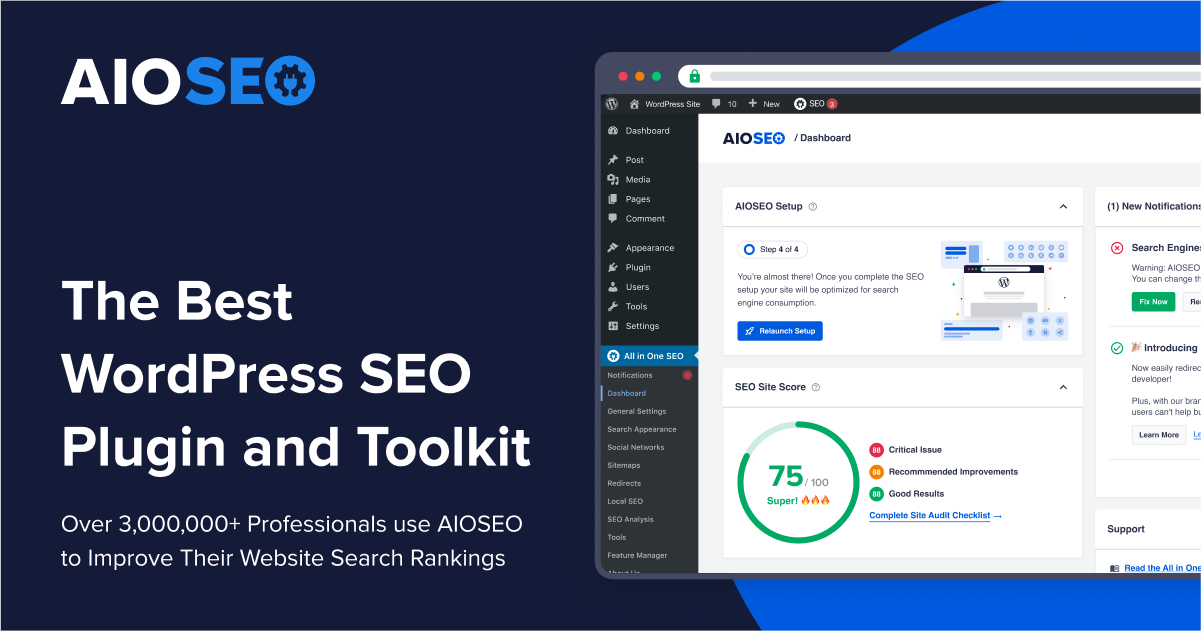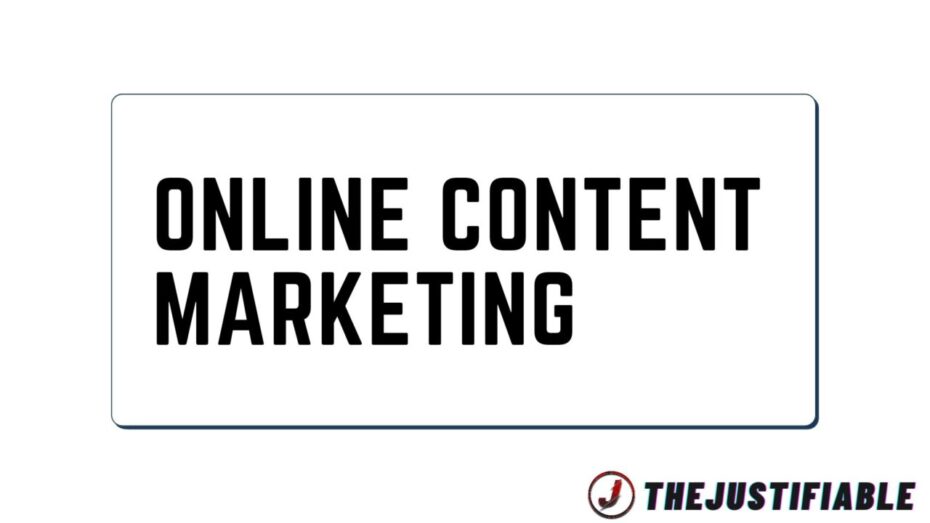Table of Contents
Content marketing is crucial for establishing a trustworthy online reputation. By leveraging strategic content creation and distribution, businesses can connect with their audience, build trust, and enhance their online presence.
This article will delve into effective content marketing strategies that foster credibility and trustworthiness.
Understanding the Importance of Content Marketing
Content marketing is a powerful tool for businesses to connect with their audience and build a trustworthy online reputation. By creating and sharing valuable content, businesses can attract and engage potential customers, leading to increased brand loyalty and credibility. Understanding the significance of content marketing is the first step towards leveraging its full potential.
Content marketing involves the strategic creation and distribution of valuable, relevant content to attract and retain a clearly defined audience. It is not just about selling products or services; it’s about providing useful information that meets the needs and interests of your audience. This approach helps build a relationship with potential customers, positioning your brand as a trusted authority in your industry.
What Is Content Marketing?
Content marketing is a strategic marketing approach focused on creating and distributing valuable, relevant, and consistent content to attract and engage a target audience.
Unlike traditional advertising, which often interrupts the audience, content marketing provides useful information that addresses their needs and interests. This method helps build trust and fosters a positive relationship between the brand and its audience.
Content marketing can take various forms, including blog posts, articles, videos, infographics, podcasts, and social media posts. Each type of content serves a specific purpose and reaches the audience through different channels. By understanding the preferences of your target audience, you can create content that resonates with them, ultimately driving engagement and conversions.
Creating high-quality content is essential for effective content marketing. This means ensuring that your content is well-researched, informative, and provides genuine value to your audience. High-quality content helps establish your brand as a credible source of information, which is crucial for building trust and fostering long-term relationships with your audience.
Key Benefits of Content Marketing
Content marketing offers numerous benefits that can significantly impact your business’s success. One of the primary advantages is increased brand awareness. By consistently providing valuable content, you can reach a wider audience and make your brand more recognizable. This increased visibility can lead to higher traffic and more potential customers.
Another key benefit of content marketing is improved search engine rankings. Search engines prioritize high-quality, relevant content, so by producing valuable content, you can boost your website’s SEO performance. This increased visibility in search results can drive more organic traffic to your site, resulting in higher conversion rates and sales.
Content marketing also helps build stronger customer relationships. By providing content that addresses your audience’s pain points and interests, you can create a sense of loyalty and trust. Engaged customers are more likely to become repeat buyers and advocates for your brand, helping you achieve sustainable growth and long-term success.
Furthermore, content marketing can be cost-effective compared to traditional advertising methods. While it requires an investment of time and resources to create high-quality content, the long-term benefits often outweigh the costs. Once published, content can continue to attract and engage customers over time, providing ongoing value and return on investment.
Why Trust Is Essential in Online Marketing
Trust is a fundamental element of successful online marketing. In a digital landscape where consumers are bombarded with information, establishing trust can set your brand apart from the competition. When customers trust your brand, they are more likely to engage with your content, make purchases, and recommend your products or services to others.
Building trust begins with transparency and authenticity. Consumers appreciate brands that are honest and open about their values, practices, and intentions. By consistently delivering high-quality content that genuinely helps your audience, you demonstrate your commitment to their needs and establish your brand as a reliable source of information.
Trust also plays a crucial role in driving customer loyalty. When customers trust your brand, they are more likely to return for future purchases and remain loyal over time. This loyalty translates into repeat business and positive word-of-mouth referrals, both of which are essential for sustainable growth.
Moreover, trust influences purchasing decisions. In an era where online reviews and testimonials significantly impact consumer behavior, a trustworthy brand is more likely to receive positive feedback and recommendations. This social proof can further enhance your brand’s reputation and attract new customers, creating a cycle of trust and growth.
Creating High-Quality, Trustworthy Content
Creating high-quality, trustworthy content is the cornerstone of effective content marketing. When you produce content that resonates with your audience and meets their needs, you build credibility and foster long-term relationships. This process involves understanding what makes content high-quality and trustworthy and how to avoid common pitfalls.
High-quality content is well-researched, informative, and engaging. It should provide real value to your audience, answering their questions and addressing their pain points. Trustworthy content, on the other hand, is accurate, transparent, and authentic. By combining these elements, you can create content that not only attracts but also retains your audience, ultimately enhancing your online reputation.
Characteristics of High-Quality Content
High-quality content stands out in the crowded digital landscape. It is characterized by its relevance, depth, and engagement. First and foremost, your content must be relevant to your audience’s interests and needs. This requires thorough research to understand what your audience is searching for and what problems they need to solve.
Depth is another crucial characteristic. High-quality content delves deeply into a topic, providing comprehensive information and actionable insights. This means going beyond surface-level information and offering unique perspectives that add value to the reader. Detailed, well-researched content demonstrates your expertise and establishes your brand as a credible authority in your field.
Engagement is also vital for high-quality content. Engaging content captures the reader’s attention and keeps them interested throughout the piece. This can be achieved through a conversational tone, compelling storytelling, and interactive elements like questions and calls to action. The more engaged your audience is, the more likely they are to trust your brand and return for more content.
Visual elements play a significant role in enhancing content quality. Including images, infographics, and videos can make your content more appealing and easier to understand. Visuals help break up text, making it more digestible, and can also support your points with visual evidence, further establishing your content’s credibility.
How to Ensure Content Trustworthiness
Ensuring content trustworthiness involves maintaining accuracy, transparency, and authenticity. Accuracy is paramount; always fact-check your information and provide credible sources to back up your claims. Misinformation can quickly erode trust and damage your reputation, so it’s essential to be diligent in your research.
Transparency is about being open and honest with your audience. This means clearly stating your intentions, disclosing any potential biases, and being upfront about your content’s purpose. When your audience knows you’re being transparent, they’re more likely to trust your content and your brand.
Authenticity involves being genuine and true to your brand’s voice and values. Authentic content resonates with readers because it feels real and relatable. Avoid overly promotional language and focus on providing value to your audience. Sharing personal stories, experiences, and insights can help create a more authentic connection with your readers.
Regularly updating your content is another key aspect of maintaining trustworthiness. The digital landscape is constantly evolving, and what’s accurate today may be outdated tomorrow. By keeping your content current and relevant, you demonstrate your commitment to providing reliable information and maintaining your audience’s trust.
Avoiding Common Content Marketing Pitfalls
Content marketing can be incredibly effective, but it’s easy to fall into common pitfalls that can undermine your efforts. One major pitfall is creating content that’s overly promotional. While it’s important to highlight your products or services, your primary focus should be on providing value to your audience. Excessive self-promotion can turn readers away and damage your credibility.
Another pitfall is neglecting SEO best practices. While it’s crucial to avoid keyword stuffing, integrating relevant keywords naturally throughout your content is essential for improving your search engine rankings. This helps your content reach a broader audience and ensures that it’s discoverable by those who are searching for information on your topics.
Inconsistent content production is a common mistake. Consistency is key in content marketing; it helps build anticipation and keeps your audience engaged. Developing a content calendar and sticking to a regular publishing schedule can help you maintain consistency and ensure that you’re continually providing fresh, valuable content.
Failing to engage with your audience is another significant pitfall. Content marketing isn’t just about creating content; it’s also about fostering a community and building relationships. Responding to comments, encouraging discussions, and soliciting feedback are all ways to engage with your audience and show that you value their input and perspectives.
Developing a Consistent Content Strategy
Creating a consistent content strategy is vital for successful content marketing. Consistency not only helps in building a reliable brand image but also in maintaining audience engagement. When your content is consistent, it becomes easier for your audience to recognize and trust your brand. This section will explore the importance of consistency, how to build a content calendar, and the tools you can use to maintain content consistency.
Consistency in content marketing means delivering high-quality content on a regular schedule. This approach ensures that your audience knows when to expect new content from you, helping to build anticipation and engagement. A consistent content strategy also helps in reinforcing your brand message and values, making your brand more memorable to your audience.
Importance of Consistency in Content Marketing
Consistency is a cornerstone of effective content marketing. When you consistently deliver valuable content, you build trust and credibility with your audience. This trust translates into loyalty, as your audience comes to see your brand as a reliable source of information. Consistency also helps in establishing your brand’s voice and style, making it easily recognizable in a crowded digital landscape.
One of the key benefits of consistency is improved audience engagement. When your audience knows they can expect regular updates, they are more likely to return to your site or follow your social media channels. This regular engagement not only increases your reach but also enhances your relationship with your audience, fostering a sense of community and loyalty.
Search engine optimization (SEO) is another area where consistency plays a crucial role. Search engines favor websites that update their content regularly, as this indicates that the site is active and providing up-to-date information. By maintaining a consistent publishing schedule, you can improve your website’s SEO performance, making it more likely to appear in search results and attract organic traffic.
Consistency also contributes to your brand’s overall image and reputation. A consistent content strategy shows that your brand is organized, reliable, and committed to providing value to its audience. This positive perception can lead to increased brand recognition, higher levels of trust, and ultimately, more conversions and sales.
Building a Content Calendar for Consistency
A content calendar is a powerful tool for maintaining consistency in your content marketing efforts. It helps you plan, organize, and schedule your content in advance, ensuring that you always have fresh material ready for publication. By mapping out your content strategy, you can maintain a steady flow of content and avoid the pitfalls of last-minute scrambling.
To build an effective content calendar, start by identifying your content goals and objectives. Consider what you want to achieve with your content marketing, whether it’s increasing brand awareness, driving traffic, or boosting engagement. Having clear goals will guide your content planning and help you create content that aligns with your overall strategy.
Next, brainstorm a list of content ideas that are relevant to your audience and support your goals. Think about the topics your audience is interested in, the questions they frequently ask, and the problems they need solving. By focusing on these areas, you can create content that provides genuine value and resonates with your audience.
Once you have a list of content ideas, schedule them on your content calendar. Decide on the frequency of your posts and assign specific dates for each piece of content. Be realistic about your capacity to produce content and ensure that you have enough time to create high-quality material. A well-structured content calendar helps you stay organized and ensures a steady stream of content.
Review and adjust your content calendar regularly to keep it aligned with your evolving goals and audience needs. Monitor your content performance and make adjustments based on what resonates most with your audience. This flexibility ensures that your content strategy remains effective and relevant over time.
Tools to Maintain Content Consistency
Several tools can help you maintain consistency in your content marketing efforts. These tools streamline the content creation and scheduling process, making it easier to stick to your content calendar and deliver regular updates to your audience. Here are some of the most effective tools for maintaining content consistency:
Editorial calendar tools, such as Trello or Asana, are excellent for planning and organizing your content. These tools allow you to create a visual representation of your content schedule, assign tasks, set deadlines, and track progress. With an editorial calendar, you can ensure that your content production stays on track and meets your publishing deadlines.
Content management systems (CMS) like WordPress or HubSpot provide robust features for creating, editing, and publishing content. These platforms offer various plugins and integrations that can help you automate parts of your content process, such as social media sharing and SEO optimization. Using a CMS can significantly enhance your efficiency and ensure that your content is consistently high-quality and well-optimized.
Social media scheduling tools, like Buffer or Hootsuite, are invaluable for maintaining a consistent presence on social media. These tools allow you to schedule posts in advance, ensuring that your social media channels are regularly updated with fresh content. By automating your social media schedule, you can focus more on engaging with your audience and creating valuable content.
Analytics tools, such as Hotjar or Kissmetrics, provide insights into your content performance. These tools help you track key metrics, such as page views, engagement rates, and conversion rates. By analyzing this data, you can identify trends, understand what content resonates most with your audience, and make informed decisions to optimize your content strategy.
Leveraging Social Proof to Build Trust
Social proof is a powerful tool in content marketing that helps build trust and credibility with your audience. By showcasing positive feedback and user experiences, you can enhance your brand’s reputation and encourage potential customers to engage with your content. Leveraging social proof effectively involves understanding the different types available and integrating them strategically into your content marketing efforts.
Incorporating social proof in your content marketing strategy can significantly impact your audience’s perception of your brand. When potential customers see that others have had positive experiences with your products or services, they are more likely to trust your brand and make a purchase. This section will explore various types of social proof and how to use them to build trust and credibility.
Types of Social Proof in Content Marketing
There are several types of social proof that can be utilized in content marketing to build trust with your audience. One of the most common types is customer testimonials. Testimonials from satisfied customers provide firsthand accounts of positive experiences, which can be very persuasive for potential buyers. These testimonials can be featured on your website, social media, and other marketing materials.
Another type of social proof is case studies. Case studies provide in-depth analyses of how your products or services have helped specific customers achieve their goals. They often include detailed data and real-world results, making them highly credible and informative. By showcasing successful case studies, you can demonstrate the tangible benefits of your offerings.
Social media mentions and shares are also powerful forms of social proof. When customers share their positive experiences on social media, it serves as a public endorsement of your brand. Encouraging and highlighting these mentions can boost your brand’s visibility and credibility. Additionally, influencer endorsements can serve as a potent form of social proof. Influencers with large followings can provide authentic recommendations that resonate with their audience, further enhancing your brand’s trustworthiness.
Finally, displaying awards and certifications can also act as social proof. These accolades serve as third-party endorsements of your brand’s quality and reliability. Featuring them prominently on your website and marketing materials can reassure potential customers of your credibility and expertise.
How to Use Testimonials Effectively
Testimonials are one of the most effective forms of social proof, but it’s essential to use them strategically. Start by collecting genuine, detailed testimonials from your satisfied customers. Encourage them to share specific aspects of their experience, such as how your product or service solved their problem or exceeded their expectations. The more specific and detailed the testimonial, the more persuasive it will be.
Once you have collected testimonials, feature them prominently on your website, particularly on landing pages, product pages, and the homepage. Use a mix of text and video testimonials to cater to different audience preferences. Video testimonials can be especially powerful as they provide a more personal and authentic account of customer experiences.
In addition to your website, share testimonials on your social media channels. Create visually appealing graphics that highlight key quotes from the testimonials and include a call-to-action encouraging followers to learn more about your products or services. Regularly updating your social media with fresh testimonials can help keep your content engaging and build ongoing trust with your audience.
Another effective strategy is to incorporate testimonials into your email marketing campaigns. Featuring a compelling testimonial in your emails can enhance their impact and encourage recipients to take action. Use testimonials to support your messaging and highlight the benefits of your offerings, reinforcing the value and credibility of your brand.
Integrating User-Generated Content
User-generated content (UGC) is another powerful form of social proof that can significantly enhance your content marketing strategy. UGC includes any content created by your customers, such as reviews, photos, videos, and social media posts. This type of content is highly authentic and relatable, making it a valuable asset for building trust and engagement.
To integrate UGC effectively, start by encouraging your customers to share their experiences with your brand on social media. Create branded hashtags and run contests or campaigns that incentivize customers to post about your products or services. Highlighting these posts on your own social media channels can showcase the positive experiences of your customers and foster a sense of community.
Feature UGC on your website to provide authentic insights into how customers are using and enjoying your products. This could include a dedicated section for customer photos and reviews or integrating UGC into product pages. Seeing real customers using your products can help potential buyers visualize themselves as part of your brand community, increasing their likelihood of making a purchase.
Email marketing is another excellent channel for leveraging UGC. Include customer photos or quotes in your email campaigns to add a personal touch and demonstrate the real-world impact of your products. This approach not only builds trust but also makes your emails more engaging and relatable.
Monitor and respond to UGC to show your appreciation and engagement with your audience. Acknowledge and thank customers for their contributions, and consider featuring outstanding UGC in your marketing materials. This recognition can encourage more customers to share their experiences and contribute to your growing collection of social proof.
Utilizing SEO to Enhance Credibility
Search engine optimization (SEO) is a critical component of content marketing that can significantly enhance your brand’s credibility. By optimizing your content for search engines, you can improve your website’s visibility, attract more organic traffic, and establish your brand as an authoritative source in your industry. This section will explore SEO best practices, the importance of keywords, and how to optimize your content for search engines.
Implementing effective SEO strategies involves understanding the factors that influence search engine rankings and applying best practices to your content. By focusing on these elements, you can ensure that your content reaches a broader audience and builds trust with both search engines and users.
SEO Services Recommendations
 AIOSEO
|  Sitechecker
|  Squirrly
|
SEO Best Practices for Content Marketing
To enhance your content marketing efforts, it’s essential to follow SEO best practices. Start with keyword research to identify the terms and phrases your target audience is searching for. Use tools like Google Keyword Planner, SEMrush, or SEOPowerSuite to find relevant keywords with a good balance of search volume and competition. Integrate these keywords naturally into your content, including in headings, subheadings, and throughout the body text.
Another crucial aspect of SEO is creating high-quality, informative content that provides value to your audience. Search engines prioritize content that is well-written, thoroughly researched, and relevant to the user’s query. Focus on creating in-depth articles that answer common questions, solve problems, and offer unique insights. The more valuable your content, the higher it will rank in search engine results.
Optimize your on-page elements, such as meta titles, descriptions, and headers. These elements help search engines understand the content of your page and improve its visibility in search results. Use your primary keyword in the meta title and description to ensure they accurately reflect the content of your page and encourage clicks from search engine users.
Ensure your website is mobile-friendly and has a fast loading speed. Search engines favor websites that provide a good user experience, so optimizing your site’s performance can positively impact your rankings. Use tools like Gmetrix to identify areas for improvement and implement necessary changes to enhance your site’s speed and usability.
Importance of Keywords in Building Trust
Keywords play a crucial role in building trust and credibility with both search engines and your audience. By using relevant keywords, you can ensure that your content aligns with the search intent of your target audience. This alignment increases the likelihood that your content will appear in search results when users are looking for information related to your industry.
Effective keyword usage signals to search engines that your content is relevant and valuable. When your content ranks highly in search results, it indicates to users that your brand is an authoritative source on the topic. This perceived authority can significantly enhance your brand’s credibility and encourage users to trust your content.
Incorporate keywords naturally throughout your content to avoid keyword stuffing, which can harm your SEO efforts and make your content less readable. Aim to use your primary keyword in a way that flows naturally within the context of your content. This approach not only improves your SEO performance but also ensures that your content remains engaging and valuable to your audience.
Using long-tail keywords can help you attract more targeted traffic and build trust with a specific audience segment. Long-tail keywords are more specific and less competitive, making it easier to rank for them. By addressing niche topics and queries, you can provide highly relevant content that meets the precise needs of your audience, further establishing your brand as a trusted authority.
How to Optimize Content for Search Engines
Optimizing your content for search engines involves several key steps. Start by conducting thorough keyword research to identify the most relevant and valuable keywords for your content. Use these keywords strategically in your titles, headings, and throughout the body of your content to improve its visibility in search results.
Create high-quality, engaging content that provides value to your audience. Focus on addressing common questions, solving problems, and offering unique insights. The more valuable and informative your content, the more likely it is to rank highly in search results and attract organic traffic.
Optimize your on-page SEO elements, including meta titles, descriptions, and headers. Ensure that these elements accurately reflect the content of your page and include your primary keyword. Well-optimized on-page elements can improve your click-through rates and help search engines understand the relevance of your content.
Improve your website’s technical SEO by ensuring it is mobile-friendly and has a fast loading speed. Use tools like Google PageSpeed Insights to identify areas for improvement and implement necessary changes. A well-optimized website provides a better user experience, which can positively impact your search engine rankings and credibility.
Engaging with Your Audience Authentically
Engaging with your audience authentically is crucial for building a loyal and trusting community. Authentic engagement involves meaningful interactions that show your audience you genuinely care about their needs and opinions. This approach not only strengthens your brand’s relationship with its audience but also enhances the overall effectiveness of your content marketing efforts.
Authenticity in audience engagement is achieved through transparency, consistency, and genuine communication. By being open and honest with your audience, you create a foundation of trust that encourages more meaningful interactions. Additionally, maintaining a consistent and reliable presence helps reinforce your brand’s credibility and keeps your audience engaged over time.
Techniques for Authentic Audience Engagement
Authentic audience engagement begins with understanding your audience’s needs, interests, and preferences. Start by conducting thorough research to gain insights into what your audience cares about and what type of content resonates with them. Use this information to tailor your content and engagement strategies to meet their expectations and provide real value.
Personalization is a powerful technique for authentic engagement. Address your audience members by their names in communications and create content that speaks directly to their experiences and interests. Personalization shows that you see your audience as individuals, not just numbers, fostering a deeper connection.
Active listening is another critical technique. Pay attention to your audience’s feedback, comments, and discussions. Show that you value their input by acknowledging their perspectives and responding thoughtfully. This practice not only builds trust but also provides valuable insights that can inform your content strategy.
Creating interactive content is an excellent way to engage authentically. Polls, quizzes, and live Q&A sessions invite your audience to participate and share their opinions. Interactive content makes your audience feel involved and valued, enhancing their overall experience with your brand.
Responding to Feedback and Comments
Responding to feedback and comments is essential for authentic audience engagement. Start by monitoring your social media channels, blog comments, and other platforms where your audience interacts with your content. Use tools like Hootsuite or Sprout Social to streamline this process and ensure you don’t miss any important interactions.
When responding to comments, always be respectful and considerate. Acknowledge positive feedback with gratitude and show appreciation for your audience’s support. For constructive criticism or negative comments, respond calmly and professionally. Address any issues raised and provide solutions or explanations where necessary.
Encourage further discussion by asking follow-up questions and inviting your audience to share more of their thoughts. This practice not only keeps the conversation going but also shows that you value their opinions and are interested in their perspectives. Engaging in meaningful dialogue helps build a sense of community and strengthens your audience’s connection to your brand.
Consistency in your responses is also important. Make it a priority to respond to comments and feedback promptly. Timely responses demonstrate your commitment to engaging with your audience and show that you are actively listening and available to address their concerns.
Building Relationships Through Content
Building relationships through content involves creating material that resonates with your audience and encourages ongoing engagement. Start by producing high-quality, relevant content that addresses your audience’s needs and interests. This approach helps establish your brand as a trusted source of valuable information.
Storytelling is a powerful tool for building relationships. Share stories that highlight your brand’s values, mission, and the people behind it. Personal stories and experiences create an emotional connection with your audience, making your brand more relatable and memorable.
Encourage user-generated content (UGC) to foster a sense of community. Invite your audience to share their experiences, photos, and testimonials related to your brand. Feature this content on your social media channels and website to show appreciation for your audience’s contributions and to provide social proof.
Regularly update your content and maintain a consistent posting schedule to keep your audience engaged. Consistency reinforces your brand’s presence and reliability, ensuring that your audience knows when to expect new content from you. This practice helps build anticipation and keeps your audience coming back for more.
Measuring the Success of Your Content Marketing Efforts
Measuring the success of your content marketing efforts is crucial for understanding what works and what doesn’t. By tracking key metrics and analyzing the performance of your content, you can make informed decisions to optimize your strategy and achieve your marketing goals. This section will explore the key metrics to track, tools for measuring content performance, and how to adjust your strategy based on the insights gained.
Effective measurement involves a combination of quantitative and qualitative data. Quantitative metrics provide numerical data on your content’s performance, while qualitative insights offer a deeper understanding of how your audience interacts with your content. Together, these data points give a comprehensive view of your content marketing success.
Key Metrics to Track in Content Marketing
Several key metrics can help you evaluate the success of your content marketing efforts. One of the most important metrics is website traffic. Monitoring the number of visitors to your site gives you an indication of how well your content is attracting an audience. Tools like Woopra can help you track this metric and provide detailed insights into your audience’s behavior.
Engagement metrics, such as time on page, bounce rate, and social shares, are also critical. These metrics show how well your content is resonating with your audience and keeping them engaged. High engagement levels indicate that your content is valuable and relevant to your audience, while low engagement may signal a need for improvement.
Conversion rates are another essential metric to track. This metric measures how effectively your content is driving desired actions, such as signing up for a newsletter, downloading a resource, or making a purchase. By tracking conversion rates, you can assess the effectiveness of your calls to action and identify areas for optimization.
Customer feedback and sentiment analysis provide qualitative insights into your content’s impact. Analyzing comments, reviews, and social media mentions can help you understand your audience’s perceptions and identify trends in their feedback. This information can guide your content strategy and help you create material that better meets your audience’s needs.
Tools for Measuring Content Performance
Several tools can help you measure the performance of your content marketing efforts. Google Analytics is one of the most widely used tools for tracking website traffic, engagement metrics, and conversion rates. It provides comprehensive data on your audience’s behavior and allows you to set up custom reports to track specific metrics.
Social media analytics tools, such as Facebook Insights, Twitter Analytics, and Instagram Insights, offer detailed data on your social media performance. These tools help you track engagement metrics, such as likes, shares, comments, and follower growth, providing valuable insights into how your content is performing on social platforms.
Content management systems (CMS) like WordPress often come with built-in analytics features or can be integrated with third-party tools. These features allow you to track metrics such as page views, time on page, and bounce rate directly within your CMS, providing a seamless way to monitor your content’s performance.
Customer feedback tools, such as SurveyMonkey or Qualtrics, can help you gather qualitative data from your audience. By conducting surveys and collecting feedback, you can gain deeper insights into your audience’s preferences and perceptions. Sentiment analysis tools, like Brandwatch or Mention, can analyze social media mentions and reviews to provide a broader understanding of how your audience feels about your content.
How to Adjust Your Strategy Based on Metrics
Adjusting your content marketing strategy based on performance metrics involves analyzing the data and identifying areas for improvement. Start by reviewing your key metrics regularly to understand trends and patterns in your content’s performance. Look for content that is performing exceptionally well and analyze what factors contribute to its success.
For content that is underperforming, identify potential issues and areas for optimization. This could involve improving the quality and relevance of the content, enhancing the user experience, or optimizing for SEO. Experiment with different approaches and track the results to determine what works best for your audience.
Use A/B testing to compare different versions of your content and identify the most effective elements. This technique can help you optimize headlines, calls to action, and content formats to maximize engagement and conversions. By continuously testing and refining your content, you can ensure that it remains effective and relevant.
Incorporate audience feedback into your strategy adjustments. Pay attention to the qualitative insights gained from comments, reviews, and surveys. Use this feedback to inform your content planning and create material that better aligns with your audience’s needs and preferences. Engaging with your audience and showing that you value their input can also help build trust and loyalty.






